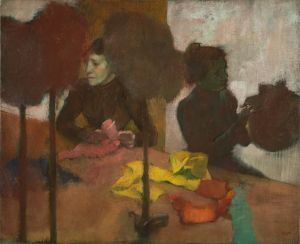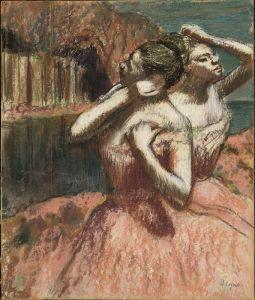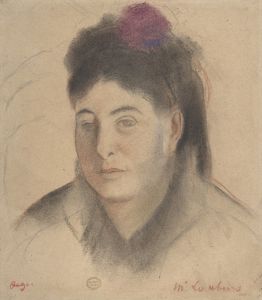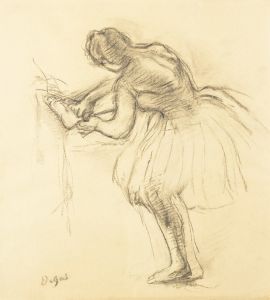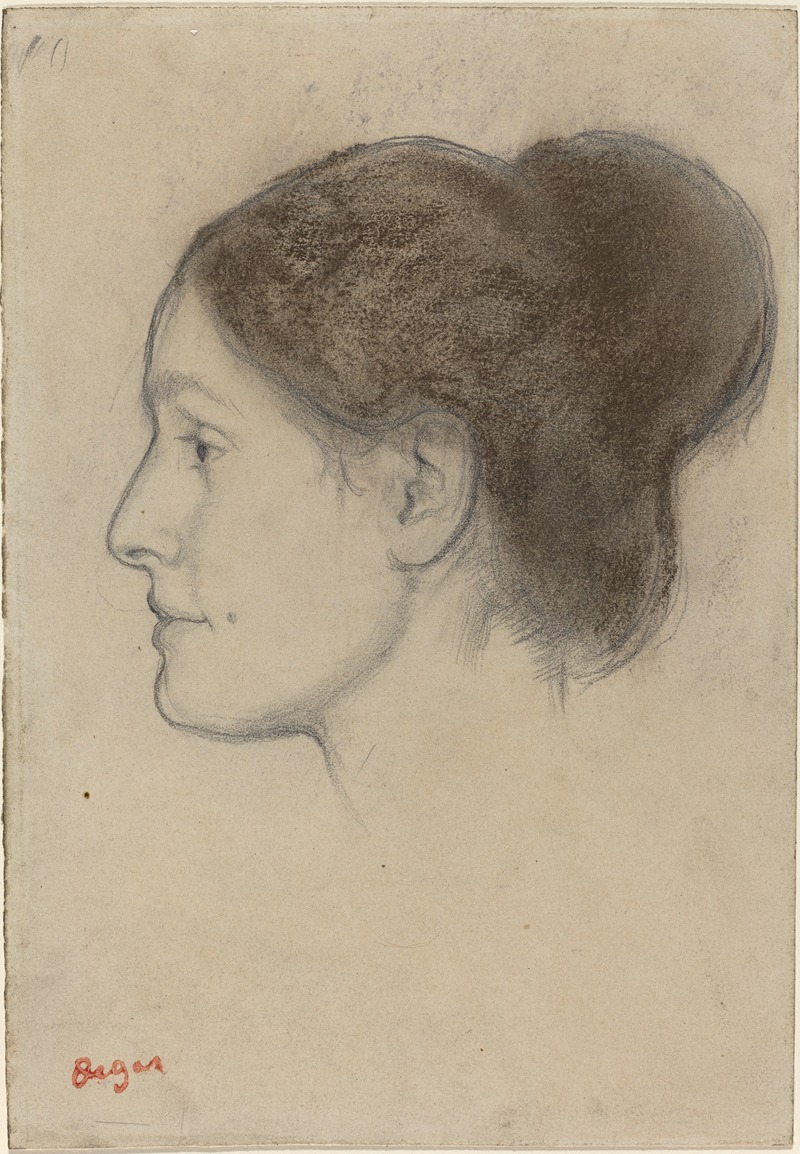
Hortense Valpinçon
A hand-painted replica of Edgar Degas’s masterpiece Hortense Valpinçon, meticulously crafted by professional artists to capture the true essence of the original. Each piece is created with museum-quality canvas and rare mineral pigments, carefully painted by experienced artists with delicate brushstrokes and rich, layered colors to perfectly recreate the texture of the original artwork. Unlike machine-printed reproductions, this hand-painted version brings the painting to life, infused with the artist’s emotions and skill in every stroke. Whether for personal collection or home decoration, it instantly elevates the artistic atmosphere of any space.
Hortense Valpinçon is a painting by the renowned French artist Edgar Degas, created around 1871. Degas, a prominent figure in the Impressionist movement, is well-known for his depictions of contemporary life, particularly focusing on dancers, women at their toilette, and scenes of Parisian leisure. This particular work, however, diverges from his more famous subjects and offers a glimpse into his portraiture.
The painting features Hortense Valpinçon, a young girl who was part of the Valpinçon family, close friends of Degas. The Valpinçons were a wealthy family who owned the Château de Ménil-Hubert in Normandy, where Degas often visited. The family’s connection to Degas is also evident in another of his well-known works, "The Valpinçon Bather" (also known as "The Bather"), which depicts a woman bathing and is believed to be inspired by the Valpinçon household.
In "Hortense Valpinçon," Degas captures the innocence and quiet demeanor of the young girl. The portrait is characterized by its delicate rendering and the subtle use of color, which is typical of Degas' approach to portraiture. The background is kept simple, ensuring that the viewer's attention remains focused on Hortense. Her expression is serene, and her pose is natural, reflecting Degas' skill in capturing the essence of his subjects without resorting to idealization.
The painting is executed in oil on canvas, a medium that Degas mastered throughout his career. His technique in this work demonstrates his ability to blend realism with a softer, more impressionistic touch. The brushwork is meticulous, yet it retains a sense of spontaneity and lightness, which is a hallmark of Degas' style.
"Hortense Valpinçon" is part of the collection at the Musée d'Orsay in Paris, which houses one of the most extensive collections of Impressionist and Post-Impressionist masterpieces. The museum's acquisition of this work ensures that it remains accessible to the public and continues to be appreciated by art enthusiasts and scholars alike.
Degas' relationship with the Valpinçon family and his portrayal of Hortense provide insight into his personal connections and the breadth of his artistic interests. While he is predominantly celebrated for his dynamic compositions of ballet dancers and racehorses, his portraits, such as this one, reveal a more intimate and contemplative side of his oeuvre.
In summary, "Hortense Valpinçon" by Edgar Degas is a significant work that highlights the artist's versatility and his ability to capture the subtleties of human expression. The painting remains an important piece within the context of Degas' broader body of work and continues to be admired for its artistic and historical value.








